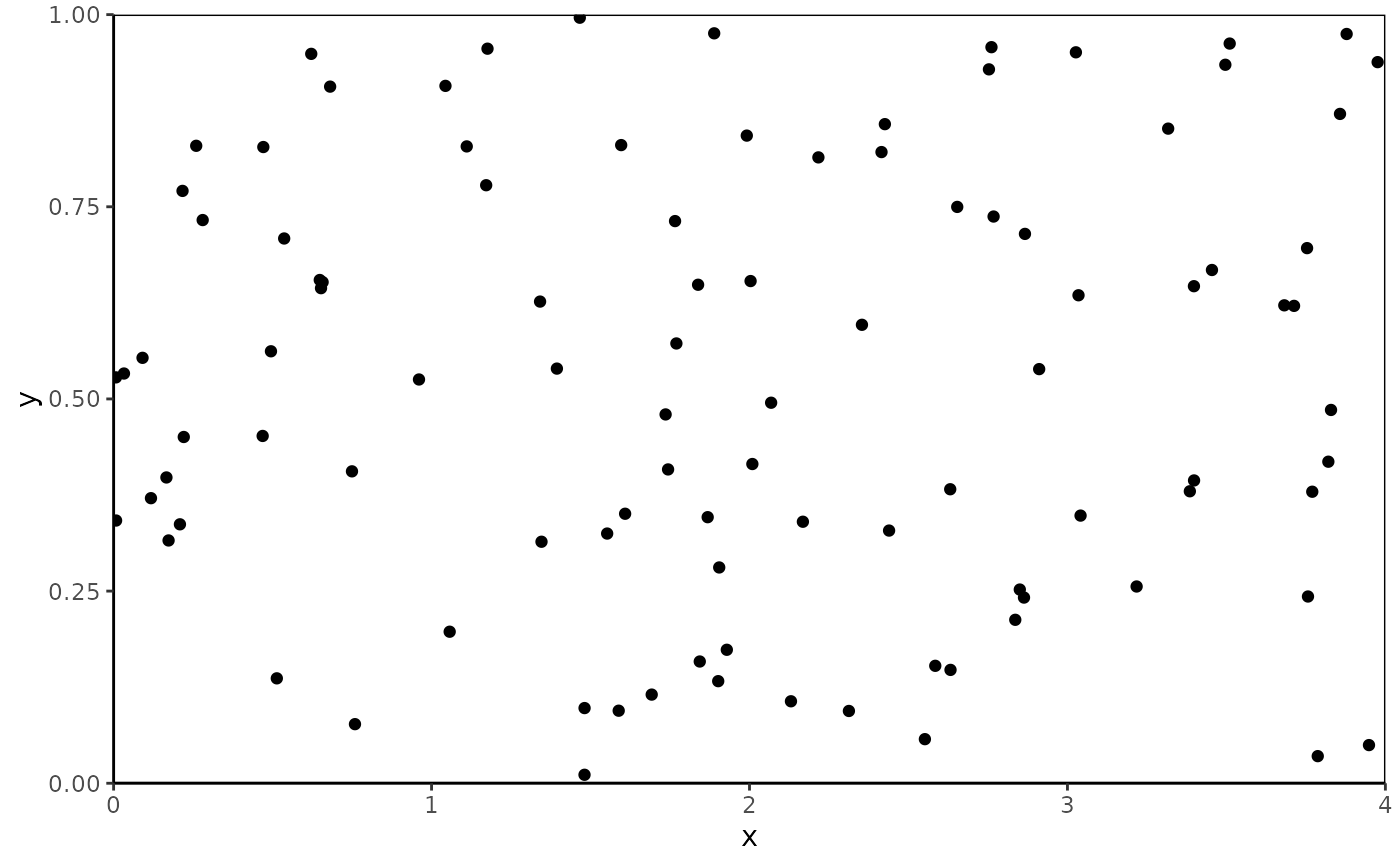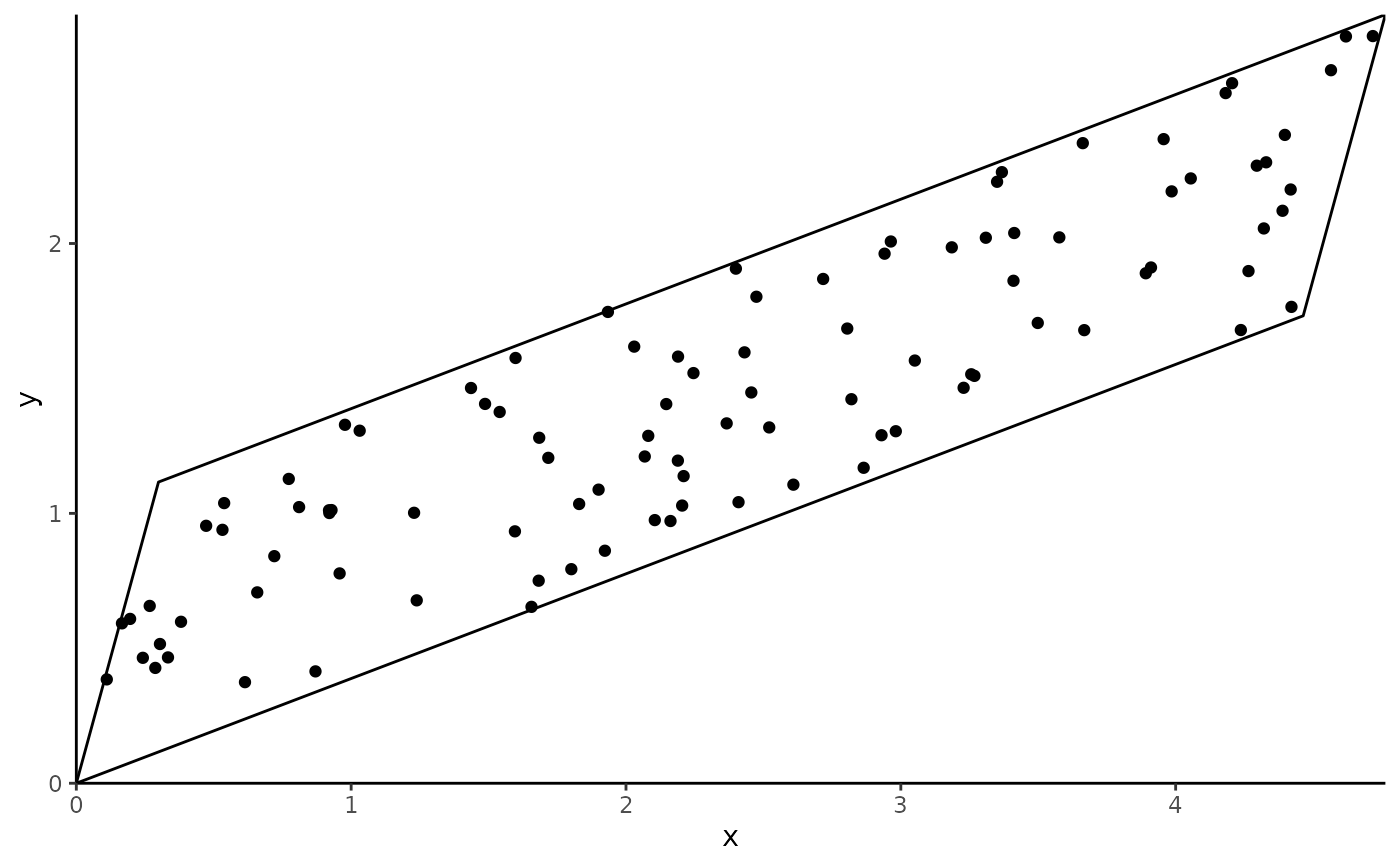coord_trans_xy behaves similarly to ggplot2::coord_trans() in that it
occurs after statistical transformation and will affect the visual appearance
of geoms. The main difference is that it takes a single transformer that is
applied to the x and y axes simultaneously. Any transformers produced by
ggforce::linear_trans() that have x and y arguments should work, but any
other transformers produced using scales::trans_new() that take x and y
arguments should also work. Axis limits will be adjusted to account for
transformation unless limits are specified with xlim or ylim.
Usage
coord_trans_xy(
trans = NULL,
xlim = NULL,
ylim = NULL,
expand = FALSE,
default = FALSE,
clip = "on"
)Arguments
- trans
Transformer for x and y axes.
- xlim, ylim
Limits for the x and y axes.
- expand
If
TRUE, the default, adds a small expansion factor to the limits to ensure that data and axes don't overlap. IfFALSE, limits are taken exactly from the data orxlim/ylim. Giving a logical vector will separately control the expansion for the four directions (top, left, bottom and right). Theexpandargument will be recycled to length 4 if necessary. Alternatively, can be a named logical vector to control a single direction, e.g.expand = c(bottom = FALSE).- default
Is this the default coordinate system? If
FALSE(the default), then replacing this coordinate system with another one creates a message alerting the user that the coordinate system is being replaced. IfTRUE, that warning is suppressed.- clip
Should drawing be clipped to the extent of the plot panel? A setting of
"on"(the default) means yes, and a setting of"off"means no. In most cases, the default of"on"should not be changed, as settingclip = "off"can cause unexpected results. It allows drawing of data points anywhere on the plot, including in the plot margins. If limits are set viaxlimandylimand some data points fall outside those limits, then those data points may show up in places such as the axes, the legend, the plot title, or the plot margins.
Details
This coordinate system only works with geoms where all points are
defined with x and y coordinates (e.g., ggplot2::geom_point(),
ggplot2::geom_polygon()). This does not currently work with geoms where
point coordinates are extrapolated (e.g., ggplot2::geom_rect()).
Furthermore, when used with ggplot2 3.5.0 and later, some transformation
edge cases may cause problems with rendering axis lines. This includes not
currently support "capping" axes. I hope to support all of these geoms,
edge cases, and features in the future.
Examples
# make transformer
library(ggforce)
trans <- linear_trans(shear(2, 0), rotate(-pi / 3))
# set up data to be plotted
square <- data.frame(x = c(0, 0, 4, 4), y = c(0, 1, 1, 0))
points <- data.frame(x = runif(100, 0, 4), y = runif(100, 0, 1))
# plot data normally
library(ggplot2)
ggplot(data = points, aes(x = x, y = y)) +
geom_polygon(data = square, fill = NA, color = "black") +
geom_point(color = "black") +
coord_cartesian(expand = FALSE) +
theme_classic()
 # plot data with transformation
ggplot(data = points, aes(x = x, y = y)) +
geom_polygon(data = square, fill = NA, color = "black") +
geom_point(color = "black") +
coord_trans_xy(trans = trans, expand = FALSE) +
theme_classic()
# plot data with transformation
ggplot(data = points, aes(x = x, y = y)) +
geom_polygon(data = square, fill = NA, color = "black") +
geom_point(color = "black") +
coord_trans_xy(trans = trans, expand = FALSE) +
theme_classic()

